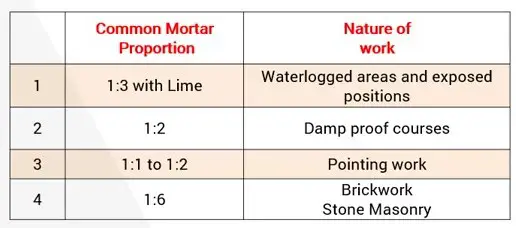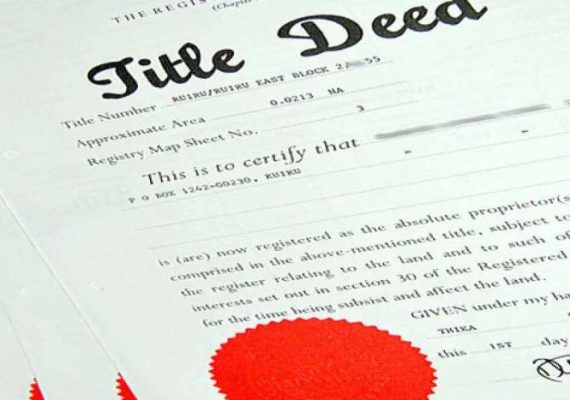Cement Mortar | Lime Mortar | Sand Cement Lime Mortar
Cement Mortar | Lime Mortar | Sand Cement Lime Mortar
What is Mortar?
Mortar is a heterogeneous mixture of sand, cement, and water to the required consistency. These three components are mixed in a prescribed ratio for use in building together with masonry units.
Plasticizers are used in plain cement sand mortars to improve workability. Mortars can be classified as
- Cement Mortar
- Lime Mortar
- Sand Cement Lime Mortar
The Following are the mortar selection criteria for masonry work.
- Type of masonry, brick, stone, or concrete blocks.
- Situation of use of the masonry, whether in foundation or superstructure, conditions of surrounding soil in the case of masonry buried below ground level.
- Degree of exposure to weather
- Flexibility and loading with masonry will have to bear
- special conditions like fire insulation and rate of setting
- Type and grading of fine aggregates.
- Each type should have a specific amount of cement, sand mixes, and chemicals
- Mixed largely depends on practical experience.
Preparation of Masonry Mortar
Mortar Mix Ratio
The mortar proportion depends on the nature of the work.
Mortar Ratio for Waterlogged Areas
1:3 Proportion with lime is used for waterlogged areas and exposed positions
Mortar Ratio for Damp Proof Coarse
1: 2 Proportion is used for Damp proof courses.
Mortar Ratio for Pointing Work
1:1 to 1: 2 proportion is used for pointing work.
Mortar Ratio for Brickwork
1: 6 Proportion is used for brickwork and stone masonry.
Fine Aggregate – Sand Mortar
Mortar properties depend largely upon the type of sand it contains. The sand shall be hard, durable, clean, and free from organic matter and shall not contain clay, silt and dust
- Round greens do not interlock properly.
- High amount of sand will make your mix very brittle and weak against all kinds of forces.
- Sand should be properly graded. For masonry mortar zone three sand is used where the grading falls outside the limits of the grading zones of sieves other than 150
Lime Mortar
Another important constituent of mortar can be lime. Lime was traditionally used as the binding material in lieu of Portland Cement. Lime water when compared to cement mortar is not that strong has weaker binding properties and is more porous limes shall be classified in Class A, B, C, D, and D categories.
- Class A eminently hydraulic lime used structural purposes.
- Class B semi hydraulic lime used masonry and plaster undercoat.
- Class C Fat line for finishing court and plastering whitewashing
- Class D magnesium slash diplomatic line finishing court and plastering whitewashing
- Class E kankar line for masonry mortar
Durability of Mortar.
The volume of mortar changes due to setting ,hardening and moisture loss. This will result in cracks. It also reduces born strength between masonry units.
It is very important for life of mortar to mix it thoroughly, intimately and uniformly
Preparation of Cement Mortar
Cement shall be proportioned only by the full bag and hydrated lime and aggregate shall be measured by volume. Use gauged boxes of suitable capacity.
- Take one bag and spread in a tray and tray should be clean and watertight
- Sand and cement are mixed by turning over from one end to another end for proper mixing, it has done three or four times to obtain a uniformed color of the dry mix.
- Make the required size of pond and dry material for water
- Add water according to the portion.
- Produce a workable consistency.
- Mix wet motor 5 to 10 minutes before using.
- For good practice Mortar to be used within 30 minutes after water addition.
Mixing of Mortar using Lime
Lime should be slacked and made into putty. Putty and sand in the specified proportions shall be mixed with or without the addition of water on a dry, waterproof platform or in a mixer mixing of mortar.
Preparing Cement Mortar Using Mixer Machine.
The mixing shall be done till every particle of the aggregate escorted uniformly with the cementitious material. This dry mixture should be added to the mixture machine water added and mixed for at least three minutes.
Requirements of a good mortar for masonry are strength, workability, water attention, and low drying shrinkage.
A strong mortar will have adequate crushing strength.
It is necessary that mortar should attain the initial set early enough to enable work to proceed at a reasonable pace.
At the same time, it should inside strength within a reasonable period so that masonry is in a position to take load early.


